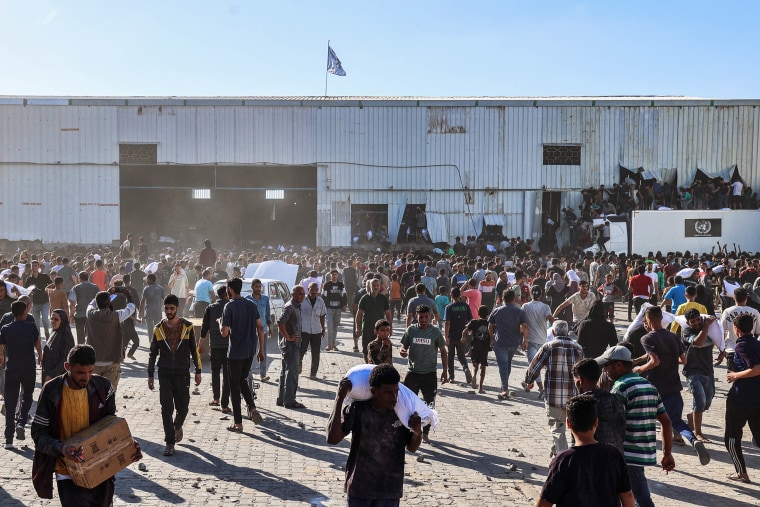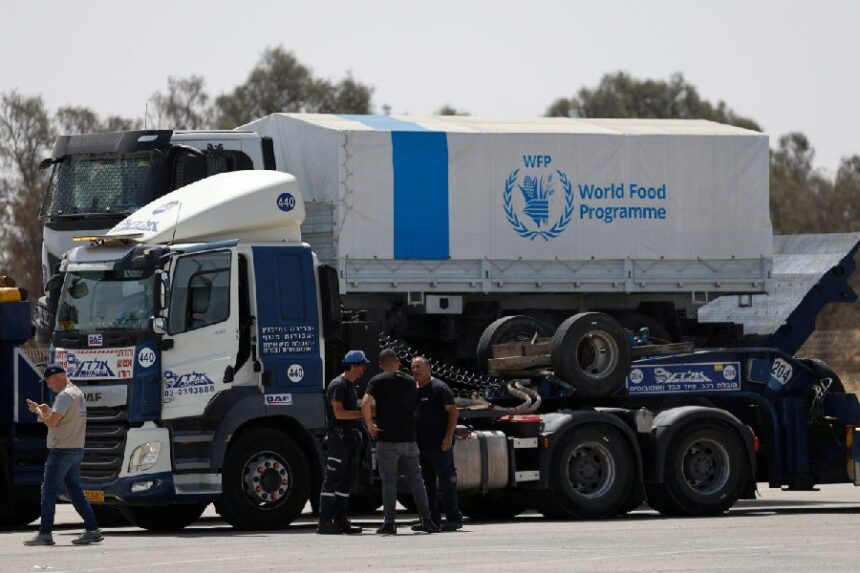Introduction
The humanitarian crisis in Gaza has reached a critical tipping point. According to the World Food Programme (WFP), dozens of its aid trucks carrying flour were overwhelmed by desperate crowds as hunger spreads across the war-torn region. Despite an easing of Israel’s 11-week aid blockade, current aid deliveries meet just over 10% of civilian needs, leaving two million Palestinians at “critical risk” of famine.
WFP Trucks Stormed Amid Desperation
Over the weekend, 77 WFP trucks entered Gaza via the Kerem Shalom crossing. But according to spokesperson Abeer Etefa, all trucks were “stopped along the way” and looted by hungry civilians. Aid workers, fearing chaos and injury, allowed people to take food directly from the trucks instead of waiting for warehouse distribution.

“After nearly 80 days of a total blockade, starving people will not let a food truck pass,” WFP stated. Workers tried to limit individuals to one bag of flour, but the desperation was overwhelming.
Blockade Eased, But Not Enough
Israel partially lifted its blockade on May 19 in response to U.S. and UN pressure. However, UN estimates suggest that fewer than 1,000 trucks entered Gaza last week—far short of the daily requirement. Philippe Lazzarini, head of the UNRWA, criticized the delivery scale as “a mockery to the mass tragedy unfolding under our watch.”
Israeli agency COGAT blamed the UN for delays, claiming that hundreds of trucks were stalled on the Gaza side due to poor coordination. “More aid would get to the people if you collected what is waiting,” Israel’s foreign ministry stated on X.
Security, Insecurity & Political Gridlock
The UN’s Jonathan Whittall reported that relief operations were paralyzed by escalating insecurity, “inappropriate routes,” and long approval delays. Meanwhile, a new U.S.- and Israel-backed NGO, the Gaza Humanitarian Foundation, claimed to have distributed two million meals—but the UN refused to cooperate with them, saying the approach breaches humanitarian neutrality.
Learn more about how WFP operates during conflicts.
Ongoing War Compounds the Crisis
While aid deliveries stall, the Israel Defense Forces (IDF) continue airstrikes across Gaza. Over 60 people were reportedly killed in 24 hours, with Gaza’s health ministry stating more than 54,000 have died since the war began in October 2023.
Displaced populations in Khan Younis are surviving on minimal rations. Children are the primary victims—both malnourished and wounded. Dr. Christos Georgalas, who recently served at Nasser Hospital, told the BBC that trauma care was being rationed due to ICU overload and lack of supplies. He reported colleagues working unpaid and commuting through war zones to treat patients.
Diplomatic Setbacks and Blocked Visits
Tensions escalated further as Israel blocked a diplomatic visit from the foreign ministers of Egypt, Bahrain, Jordan, and Saudi Arabia to Ramallah. The visit was intended to promote the two-state solution—something the current Israeli government firmly rejects.

However, France and Saudi Arabia will co-host a peace conference next month to attempt diplomatic resolution.
Conclusion
As chaos defines Gaza’s humanitarian landscape, international aid alone is proving insufficient. With aid trucks overrun, hospitals collapsing, and food insecurity reaching famine thresholds, the crisis demands immediate coordinated global action. Until political, logistical, and military barriers are addressed, humanitarian principles will remain hollow promises.
Next Step: Read our in-depth report on the roots of the Israel-Hamas conflict to understand the broader implications of this unfolding humanitarian emergency.










